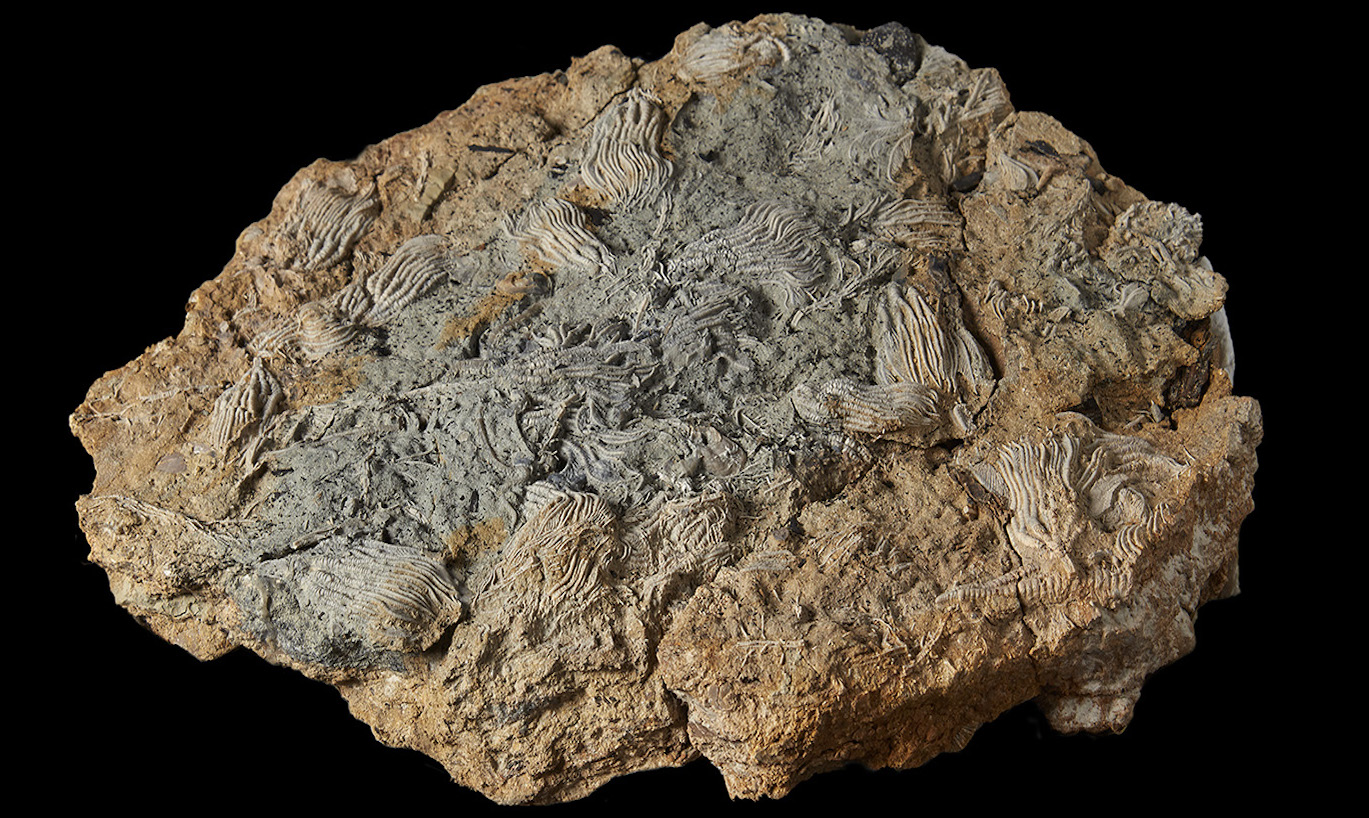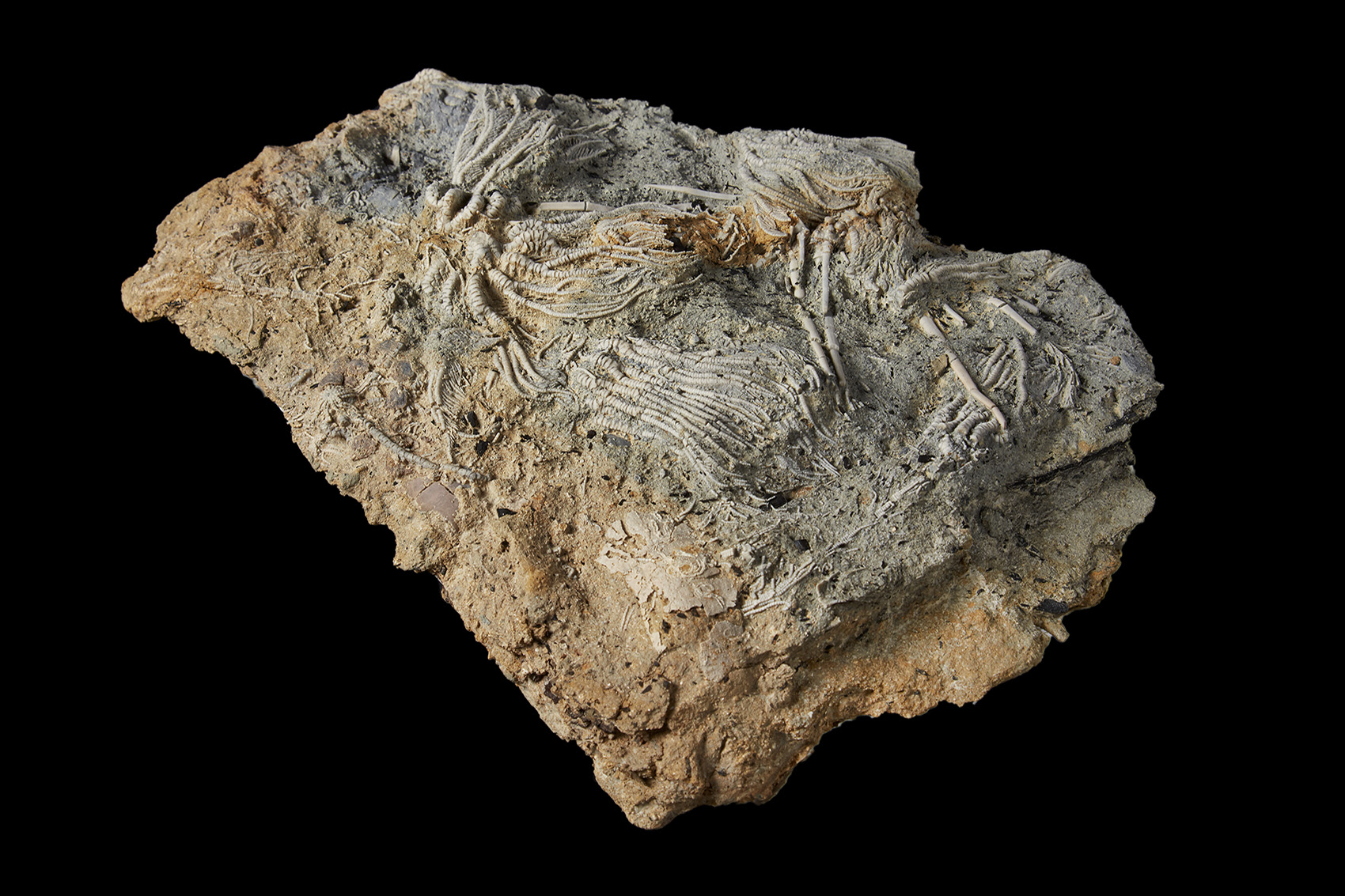Enormous graveyard of alien-like sea creatures discovered at 'Jurassic Pompeii' in central UK
The spiky-limbed creatures saw their doom approaching, but could do nothing to stop it.

Paleontologists have uncovered an enormous fossil graveyard of squiggly, alien-like Jurassic sea creatures beneath a limestone quarry in the U.K.'s Cotswolds region.
The fossil find includes perhaps tens of thousands of marine invertebrates called echinoderms — meaning "hedgehog skin" in Greek, and including the ancient ancestors of modern starfish, sea cucumbers, sea urchins and frilly-limbed sea lilies — immaculately preserved at all stages of their life cycles, the researchers said in a statement.
But right when things were booming, the thriving seabed community met a cataclysmic end; a mysterious catastrophe — perhaps a mudslide triggered by an earthquake — suffocated and entombed the animals for 167 million years.
Related: In photos: Spooky deep-sea creatures
"What we've got here is a sort of Jurassic Pompeii," Neville Hollingworth, an amateur fossil hunter who discovered the cache on a hike with his wife Sally, told BBC.com.
"[The creatures] tried to protect themselves, adopting the stress position of pulling their arms in, but it was all in vain," Tim Ewin, a paleontologist and senior curator at the Natural History Museum of London, told BBC. "They were pushed into the sediment and buried alive."
The site dates to the middle Jurassic period (roughly 200 million to 145 million years ago), when gargantuan sauropods and bloodthirsty theropod dinosaurs had the run of the land. At sea, things were in transition; as many as half of all marine species had died in an extinction event at the end of the Triassic period, and spindly-armed echinoderms were evolving like mad to fill the gap.
Get the world’s most fascinating discoveries delivered straight to your inbox.
Noted for limbs that radiate out of their bodies in sets of five, echinoderms had become highly successful at grabbing passing food with their spiny arms, according to the researchers. Some, like starfish and sea cucumbers, could feel their way along the bottom of the ocean. Others, like sea lilies, anchored themselves in place and waited for meals to come to them.
This seabed site was likely quite shallow, perhaps measuring about 65 to 130 feet (20 to 40 meters) deep, the team said. Whereas it was located in central England today, the area was closer to what is now North Africa in the mid-Jurassic, and the waters were far warmer than they are now.
While it's impossible to know what exactly doomed this massive community, the researchers are thankful for whatever it was; if not preserved beneath smothering mud, these ancient creatures would have likely been picked clean by scavengers, leaving little behind to study, the team said.
With thousands upon thousands of diverse specimens to examine, the researchers hope to learn more about echinoderm evolution during the Jurassic — including the description of several new species. Alongside the animals, the team also found preserved wood and pollen samples in the rocks, which could reveal more details about climate changes at the time.
"We'll describe in detail the new species and describe the variability of the plants and animals we have found at the site," Ewin said in the statement. "There will be another project looking at the population dynamics of the particular echinoderm groups and what that tells us about their ecology."
Originally published on Live Science.

Brandon is the space / physics editor at Live Science. With more than 20 years of editorial experience, his writing has appeared in The Washington Post, Reader's Digest, CBS.com, the Richard Dawkins Foundation website and other outlets. He holds a bachelor's degree in creative writing from the University of Arizona, with minors in journalism and media arts. His interests include black holes, asteroids and comets, and the search for extraterrestrial life.



